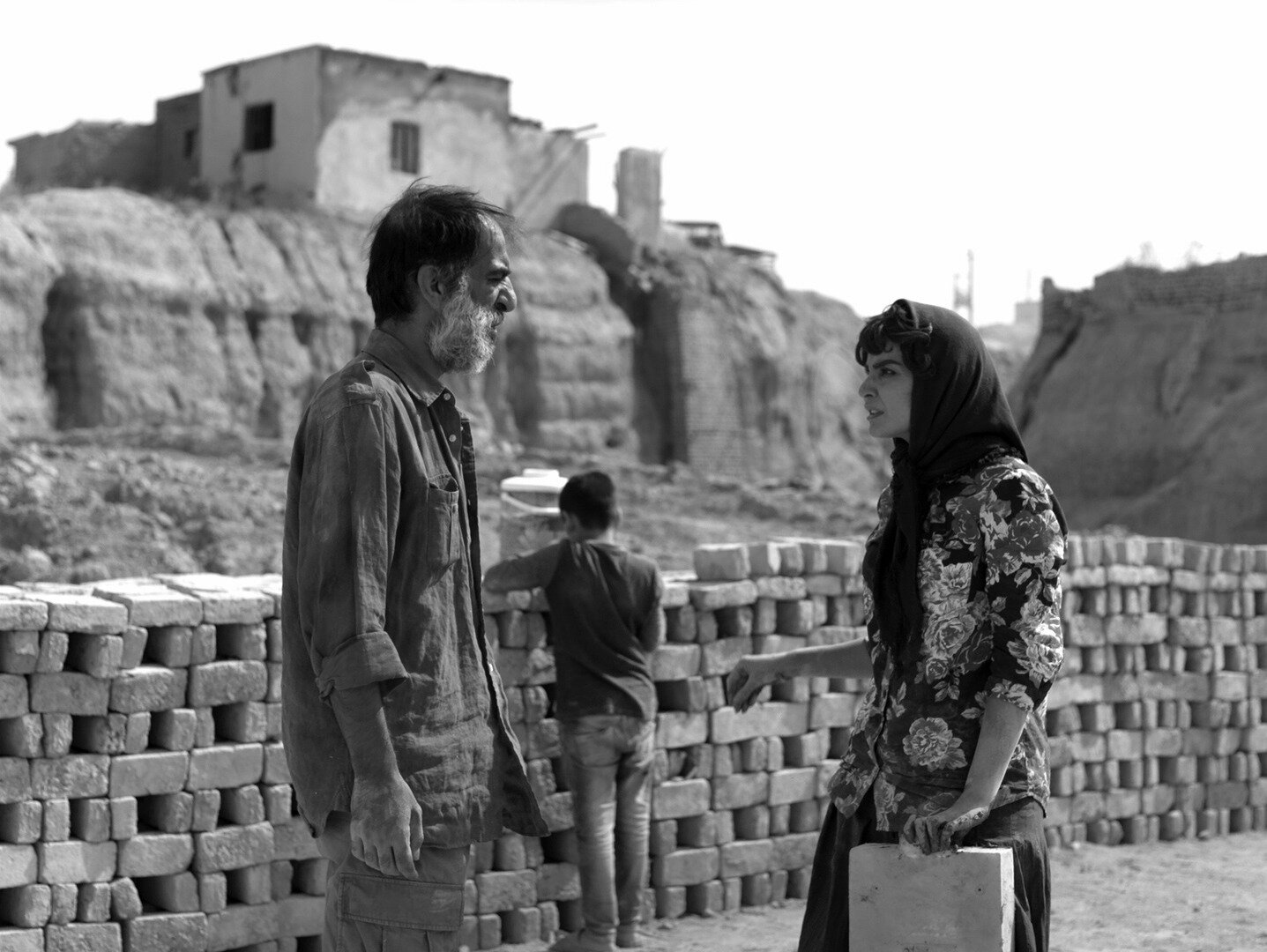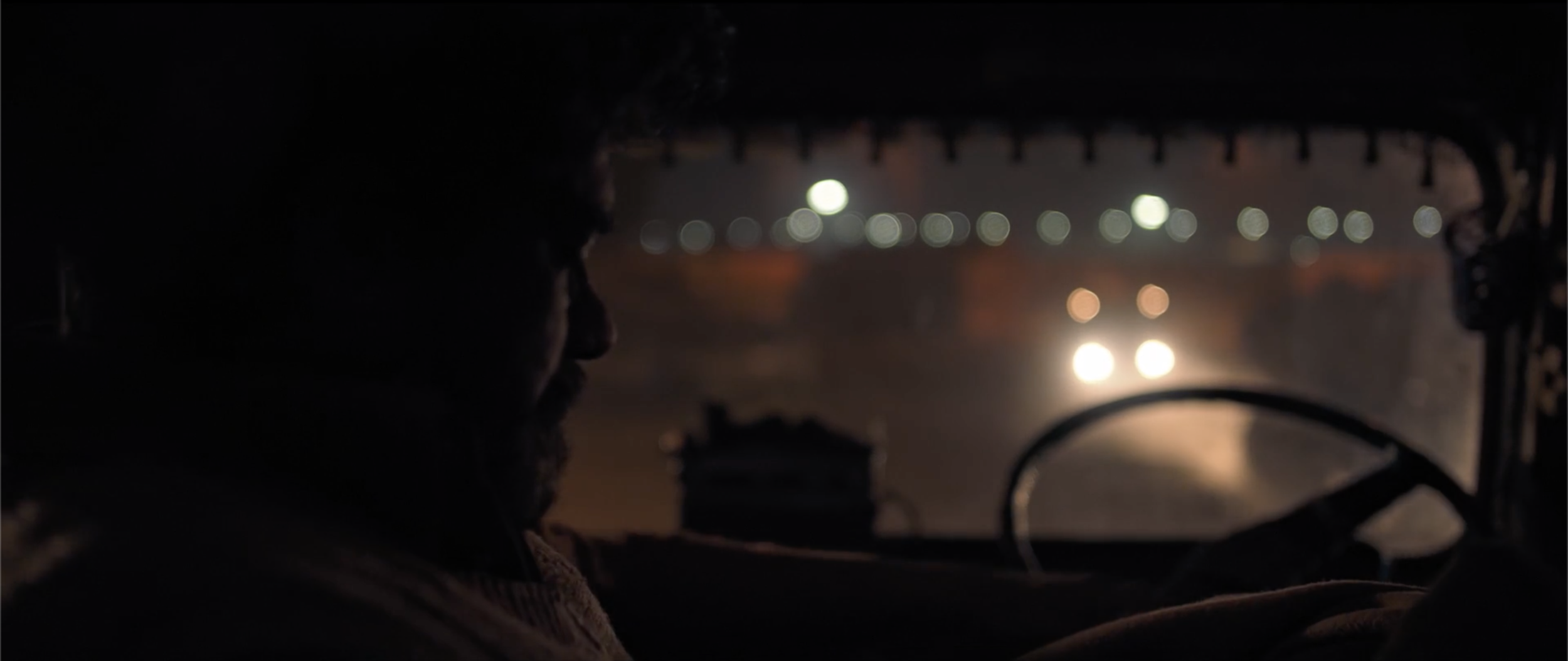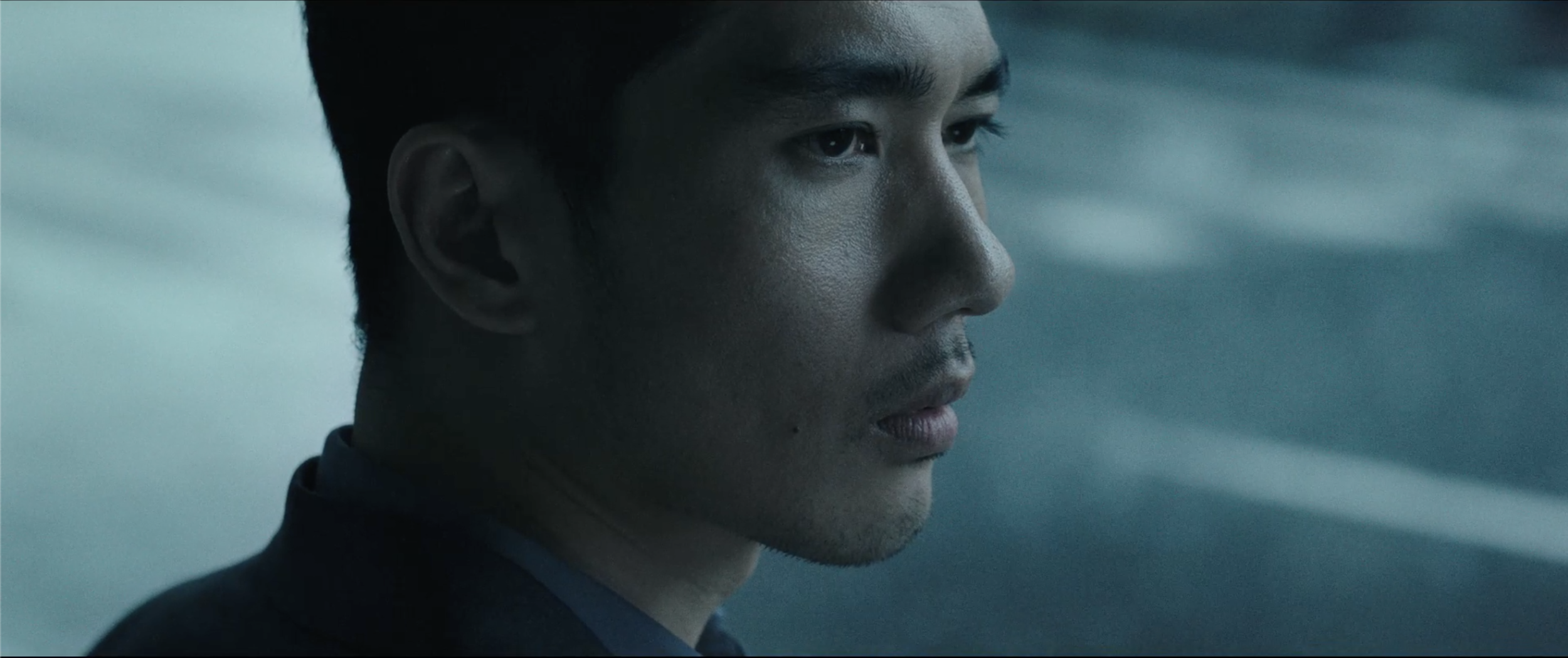The Furnace
The Furnace
Directed by Roderick MacKay
Starring: David Wenham, Jay Ryan, Mahesh Jadu, Erik Thomson, Baykali Ganambarr, Ahmed Malek, Trevor Jamieson, Goran D. Kleut, Gary Young, Samson Coulter, Osamah Sami, Mansoor Noor, Kaushik Das, Amanda Ma, Evan Williams, Xin Ocean, Quentin Yung, Sean Choolburra, Wakarra Gondarra, Matthew Parkin, Agnes Choi, Steve McCall, Daniel Motearefi, Gary Ha
Country: Australia
Year: 2020
Author review: Roberto Matteucci
Click Here for Italian Version
"It's gold, you don't need a reason."
Camels have extraordinary physical strength. They can transport enormous quantities of goods in the desert without drinking water for long periods. They are perfect animals for expeditions, for moving to deserts worldwide. In 1867, Professor Francesco Lanza, in the book Elementi di Zoologia (Elements of Zoology) describes them as follows:
"These animals are of the greatest importance, in some places, they are the only means of transport across the barren and vast deserts in Asia and Africa; depends on their special property to endure thirst for more days, to feed just with little and bad fodder, and simultaneously being able to carry considerable loads of weight, travelling with these up to 50 Italian miles per day; it is the reason the Arabs call the camel the ship of deserts." (1)
Since ancient times, the Arabs have had unlimited confidence in camels, they nicknamed them “the ship of deserts”.
The camel is present sixty-five times in the Bible (2) as a means of travel, of exchange. Dissimilar is the meaning of the camel in the Quran. In Surah 80, 17-21, its material sense becomes a poetic exaltation:
“Do they not look at the Camels, how they are made? - And at the Sky, how it is raised high?- And at the Mountains, how they are fixed firm?- And at the Earth, how it is spread out?
The camel has the same importance as the sky, as the mountains, as the earth. People do not recognize the virtues of the camels, not attributing them the right valorization. The Quranic Surah is the testimony of their mystical power. In fact, Muslims glorified the camel as a companion of many days in solitary travel.
Camels and their drivers would never have imagined being in the desert in Australia. In the early 19th century, hundreds of Muslims with their camels crossed thousands of kilometres to an unknown region.
The British colonized Australia in the late 1700s. In front, they had immense dry deserts. Horses and oxen were unable to survive. The British, with their experience in the Asian colonies, had the idea of using camels. So, many camels arrived in Australia:
“Between 1870 and 1920, as many as 20,000 camels were imported into Australia from the Arabian Peninsula, India and Afghanistan, together with at least 2,000 handlers, or cameleers, from the same regions. The animals were mainly dromedaries: half-ton ungulates with a single hump. They were ideally suited to the climate of the Australian interior: they could go weeks without water, and they had the stamina and strength to carry their loads and riders across what were often highly exposed, fiercely hot landscapes” (3)
The camels came mainly from Afghanistan, so their drivers were called by the locals "Afghans". However, they were from other countries as well. A group of various ethnic was formed, with different languages; the elements in common were the Islamic religion, and being all young and strong males:
“The cameleers known as 'Afghan’ cameleers. While some were originally from Afghanistan, others came from countries such as Baluchistan, Kashmir, Sind, Rajastan, Egypt, Persia, Turkey and Punjab, so spoke a variety of languages, Their common bond was their Islamic religion and the fact that they were almost exclusively young or middle-aged men. Almost all of the cameleers who came to Australia during this period faced enormous hardship. While their skills were needed and mostly appreciated, they were largely shunned by the European communities.” (4)
As with Aborigines, the camel drivers faced many difficulties, both human, social, and racial:
" While their skills were needed and mostly appreciated, they were largely shunned by the European communities. Indeed, racism and anger towards them was rife.” (5)
Nowadays, the feeling of guilt is very spread among the winners of the formation of states in eighteenth century.
The first example, the most popular is the film Australia, directed by Baz Luhrmann and starring Nicole Kidman, they are two Australians so famous that they look Americans. The film resembles them; it is an Australian film, but it looks like an American film.
More sensitive is the film Sweet Country by Warwick Thornton. Sweet Country is a western with a simple structure, with the classic dichotomy: white-bad against Aboriginal-good.
Australian director Roderick MacKay doubles victim psychology with the film The Furnace presented at the 77th Venice Film Festival.
The history of skilled Muslim camel drivers is little known, even in Australia itself. In 2014, young director Roderick MacKay discovered their existence. He was thrilled with these guys, who contributed to the development of Australia until the arrival of the first machines:
“In 2014, while researching a different project, I stumbled upon what seemed like the most unlikely of images – Afghan, Indian and Persian men wearing traditional garb, standing alongside a train of camels, but in the familiar Western Australian outback. Having lived in Australia my entire life, I was stunned to learn that these Islamic, Sikh and Hindu men had come to Australia from as early as the 1860s as cameleers.” (6)
Roderick MacKay knows the mechanism: to stand by the victim, real or presumed, is the easiest and the most conformist solution. Cunningly, he takes the Aborigines symbol - good, pacifist, ecological, altruistic - and adds to them the figure of another marginalized one, an Afghan fearful and devoted to Allah. Now, there are two victims, so the script is perfect for easy viewers.
The story is set in 1897. In the Australian desert, some camel drivers meet white sons of bitches. A trivial dispute ends with the murder of a Sikh driver while the Afghan, Hanif, is rescued by an Aboriginal man.
It is the period of the hectic and crazy gold rush. Hanif meets Mal, a thief wounded in a shooting. He stole two gold crown bars and must track down a clandestine furnace run by Chinese. Hanif agrees to help him but wants to share the gold, he needs money to repatriate.
Hanif and Mal, to reach the foundry, must avoid soldiers – led by Sergeant Shaw – in search of ingots. Hanif and Mal have a sealed destiny, their escape is impossible. For Hanif, the hope to return to Afghanistan vanishes. He chooses another fusion: with the humanity of the Aborigines, he will decide to unite with them, and together, he will dissolve into the desert.
The first theme of the film is Australia. A beautiful, fascinating, naturalistic, vast place. For the director, Australia is something more, it has magical, almost supernatural intensity:
“It was unreal and hugely taxing on everyone. But I’d do it all again. There’s an incredible power to that land. It leaves you in awe and aware of its indifference to you - that you could be swallowed whole and vanish without a trace. It’s very grounding." (7)
This kind of animism, of shamanism, even affects Hanif, until he vanishes “... could be swallowed whole and vanish without a trace. It’s very grounding.”
"Afghans" can vanish inside the desert because they played a key role in Australia's birth, according to the author:
"… played a critical role in the formation of not just Western Australia but also the Nation". (8)
Australia's early age was characterized by a fierce gold rush. Gold is the object of the lust of the bad Europeans while Aborigines consider it an inappropriate rock: “You're insane bringing a white man here. They kill. All for this rock.”
The protagonists are many, some normal and not decisive, like the characters of the Aborigines. Instead, deep is the personality of Hanif, acted by talented Egyptian actor Ahmed Malek.
Hanif is a pious Muslim, he does the ablutions and prays in the desert, although, his faith will have a moment of uncertainty, bewilderment. Hanif loves his camel, representing the truest sense of the Quran Surah.
Hanif is an excellent worker, patient and melancholy. He is brave, pure, honest. He is aware that he is committing a sin rather than a crime in helping Mal. So, he temporarily gives up his religiosity even if he remains God-fearing.
His role is rhetorical because the director, around him, builds a halo of mystery. Unknown is his past in a distant country, unknown is the reason why he is in Australia. In the finale an inner peace comes to him, this peace is not what Hanif wanted. Staying with Aborigines is not his dream. He hoped to return to his homeland, to his desert.
Hanif loses his irreproachable morality after meeting Mal. Mal badly needs opium to face life, he is totally addicted. Opium is even more important than stolen gold. His addiction provokes his cynical, his self-destructive, his wary even to the point of killing. Yet, Mal has a particular sensibility. Their relationship was born for mutual benefit: Mal wants to procure opium, and Hanif wants to have the gold to pay for the trip to Afghanistan. Despite the initial selfish motivations, they become friends, a sad friendship. Mal is a ruthless, cruel criminal, but his familiarity with the unhappy Hanif makes him human, even sympathetic.
The certain villain is Sergeant Shaw. A true colonizer, unscrupulous, performs his job faithfully. Anger becomes madness when pain turns into perpetual torment.
Perhaps, there is someone worst. A figure of a hieratic, priestly lady. Dressed in black, she appears solemnly, fleetingly. Who is she? Everyone is talking about her. It is an enigma. It is an arcane not revealed by the director. Why? Is it a lapse of memory? Is it the result of the editing? Is it a defect of the subject? Is it a short circuit of the script?
The director uses the desert as the backdrop for human and social drama. The photography during the day is high-key lighting, while at night the source of light comes from a sky full of stars. The desert is overflowing with details, the signs of a difficult life as the dirt. He utilizes the long-shot and extreme-long-shot to share his land with the viewers.
It is clearly a male film, the woman should arrive, it is possible to glimpse her presence but will never materialize. Manly friendship, as in a western, is technically represented by a very close camera on the actors.
Which expression must have the film? What gender to prefer? Does Australian cinema have a genre for its birth?
The director recounts the past of Australian filmography, the urban or suburban topics:
“I guess cultural trends are cyclic and it feels like there has been a long period where Australian cinema was very urban and suburban focused, looking inwards to our cities. But now it’s opened back up again, to this big wide land of ours, much like in the 70s ..." (9)
However, new Australian cinema, focused on its origins, still does not have its own interpretation.
The film begins from the most classic genre in narrating the frontier: the western:
" That was what really enticed me about the genre - not so much the visual aesthetic of the western, but more so the way it constructs meaning and navigates morality, and how I could try harness that to tell a compelling story of a young Muslim man in the outback, for a wide audience. For me, having now finished the film, this isn’t so much a western but an attempt at a new kind of outback frontier mythology". (10)
The western is the only possible gimmick. Natives, endless uninhabited lands, shootings, the gold rush, love of animals, and rough justice, outline The Furnace as a virtuous Australian western.
Western has many qualities but it could be a flaw. Roderick MacKay is conscious of this trap:
" Because the film is representing a largely unknown chapter in Australia’s history, we could not let the genre's tropes cannibalise that core intent - they had to service it so it retained a very specific sense of place and authenticity - and this was a delicate balancing act. More so, I love mythology and parables and the western genre often shares this sentiment of storytelling.” (11)
The author capitulates to the western but simultaneously, he would get rid of it. The director is the prisoner of it, also for the safety of using a consolidated style. The desire to renounce it was in vain. Pursuits, clashes, the commonplaces of westerns remain until the end.
Hanif in Australia is rootless, with no family, no friends. In the end, he finds a semblance of home. He surrenders, he loses, he will never return to Afghanistan. He accepts the Aborigines house. To achieve this, he had the help, the friendship, of a white man, of a bloodthirsty hunter, known for slaughter several indigenous.
The Australian epic in The Furnace has an authentic hero, he is not Hanif, let alone Mal, much less the Aborigines. The hero is the camel, snubbed by men, both white, Afghan, and indigene, none of them knows“how they are made”. People do not care about that creature. Yet, it is elegant, it is refined under the sun, does not have those human weaknesses like drinking water. Even the camels are not at home, they were forced to leave their desert but even on the foreign ones, they are comfortable.
Camel has a counterbalance, an equally famous, powerful, fast, but strongly annoying animal. During filming the cast fights against the deadly flies, boring, dirty, noisy. That's millions of flies: “The flies are beyond relentless”. (12)
The film has a brilliant atmosphere, with clear, decisive ethical arguments. The film is logical, formal. Nevertheless, it leaves open a doubt because it offends an another victim. To highlight Aborigines and Afghans, the director is brutal with the Chinese. With them, Roderick MacKay is hasty. They resemble members of a satanic sect, with an atrocious rite of the dead. Like all Freudian lapsus, the Chinese of The Furnace are not causal.
Ben Lerwill, 11 aprile 2018, http://www.bbc.com/travel/story/20180410-the-strange-story-of-australias-wild-camelTradotta dall’autore
Robert Grieve Black, The Story of Australia, 2012
Robert Grieve Black, The Story of Australia, 2012 Tradotta dall’autore
https://www.perthfestival.com.au/news/the-furnace-q-a-with-roderick-mackay/
https://www.perthfestival.com.au/news/the-furnace-q-a-with-roderick-mackay/
https://www.perthfestival.com.au/news/the-furnace-q-a-with-roderick-mackay/
https://www.perthfestival.com.au/news/the-furnace-q-a-with-roderick-mackay/
https://www.perthfestival.com.au/news/the-furnace-q-a-with-roderick-mackay/
https://www.perthfestival.com.au/news/the-furnace-q-a-with-roderick-mackay
https://www.perthfestival.com.au/news/the-furnace-q-a-with-roderick-mackay//























Directed: Roger Michell
Starring: Helen Mirren, Jim Broadbent, Matthew Goode
Country: UK
Year 2020